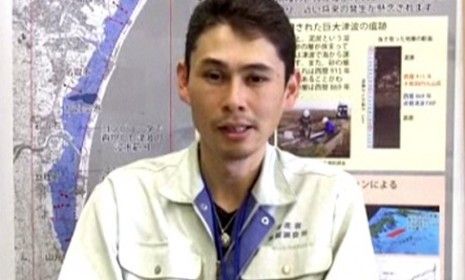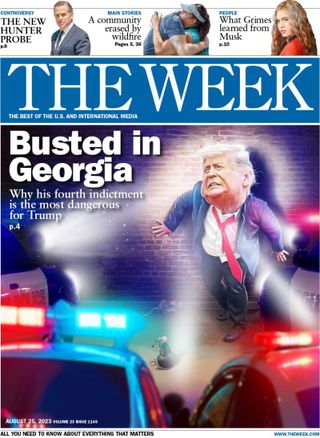The geologist who predicted Japan's tsunami
Masanobu Shishikura and his colleagues knew northeastern Japan was due for a big temblor — and missed warning Fukushima officials by less than two weeks

Not everyone was surprised by the giant tsunami that slammed into northern Japan's coast last month. Masanobu Shishikura was expecting it. "It was the phenomenon just as I had envisioned it," says the 41-year-old geologist, as quoted by The Wall Street Journal. What did Shishikura's research tell him about the fate that was in store for northeastern Japan? Here, a brief guide:
Was Shishikura certain the big one was coming?
Yes, he just couldn't pinpoint precisely when it would arrive. Shishikura calculated that colliding tectonic plates under the Pacific Ocean off northeastern Japan triggered giant waves every 450 to 800 years. Historians already knew that a 25-foot tsunami had hit Sendai Bay in the year 869, sweeping more than two miles inland and stretching as far south as the site of the now-devastated Fukushima nuclear plant. Another tsunami appeared to have hit between 1300 and 1600. So Shishikura figured that the most vulnerable areas — including the city of Sendai, and Fukushima — were due to be hit by a giant wave at any time.
Subscribe to The Week
Escape your echo chamber. Get the facts behind the news, plus analysis from multiple perspectives.

Sign up for The Week's Free Newsletters
From our morning news briefing to a weekly Good News Newsletter, get the best of The Week delivered directly to your inbox.
From our morning news briefing to a weekly Good News Newsletter, get the best of The Week delivered directly to your inbox.
How did he know that?
He figured it out by looking at rocks. Looking at the rich soil in the area, he found layers of sand and pebbles that appeared to have been carried inland by tsunamis. This gave him rough dates for killer waves dating back 3,500 years. The sediment samples revealed a pattern, with the telltale strips of tsunami evidence separated by several centuries of soil buildup.
Did he warn Japanese authorities?
Yes. Shishikura and his colleagues told the government that northeastern Japan was overdue for a huge wave. The Trade Ministry dismissed the evidence, and the Tokyo Electric Power Co. did nothing to beef up defenses at Fukushima. "At the time, we thought it was unfortunate they didn't take us seriously, but we figured it was just a matter of making a better presentation," Shishikura said, as quoted by The Sydney Morning Herald. "If only the tsunami had waited a little longer, we might have been ready." He had an appointment to explain his research to Fukushima officials on March 23; the earthquake and tsunami hit March 11.
Sign up for Today's Best Articles in your inbox
A free daily email with the biggest news stories of the day – and the best features from TheWeek.com
Was there any way to predict the extent of the damage?
Yes. Japan has been hit by 195 tsunamis since the year 400. In the last three decades, there have been three waves that were more than 30 feet high. Yet Tokyo Electric's seawall defenses at Fukushima were built to protect the nuclear reactors from waves reaching only 17 feet high. "That is ridiculous," says Ryohei Morimoto, a retired volcanology professor at the University of Tokyo, as quoted by The Japan Times. "Even if they couldn't predict the size of tsunami, they should have at least prepared for waves similar to those in the past."
Sources: Wall St. Journal, Sydney Morning Herald, Japan Times, Science Links Japan
-
 Today's political cartoons - March 30, 2025
Today's political cartoons - March 30, 2025Cartoons Sunday's cartoons - strawberry fields forever, secret files, and more
By The Week US Published
-
 5 hilariously sparse cartoons about further DOGE cuts
5 hilariously sparse cartoons about further DOGE cutsCartoons Artists take on free audits, report cards, and more
By The Week US Published
-
 Following the Tea Horse Road in China
Following the Tea Horse Road in ChinaThe Week Recommends This network of roads and trails served as vital trading routes
By The Week UK Published